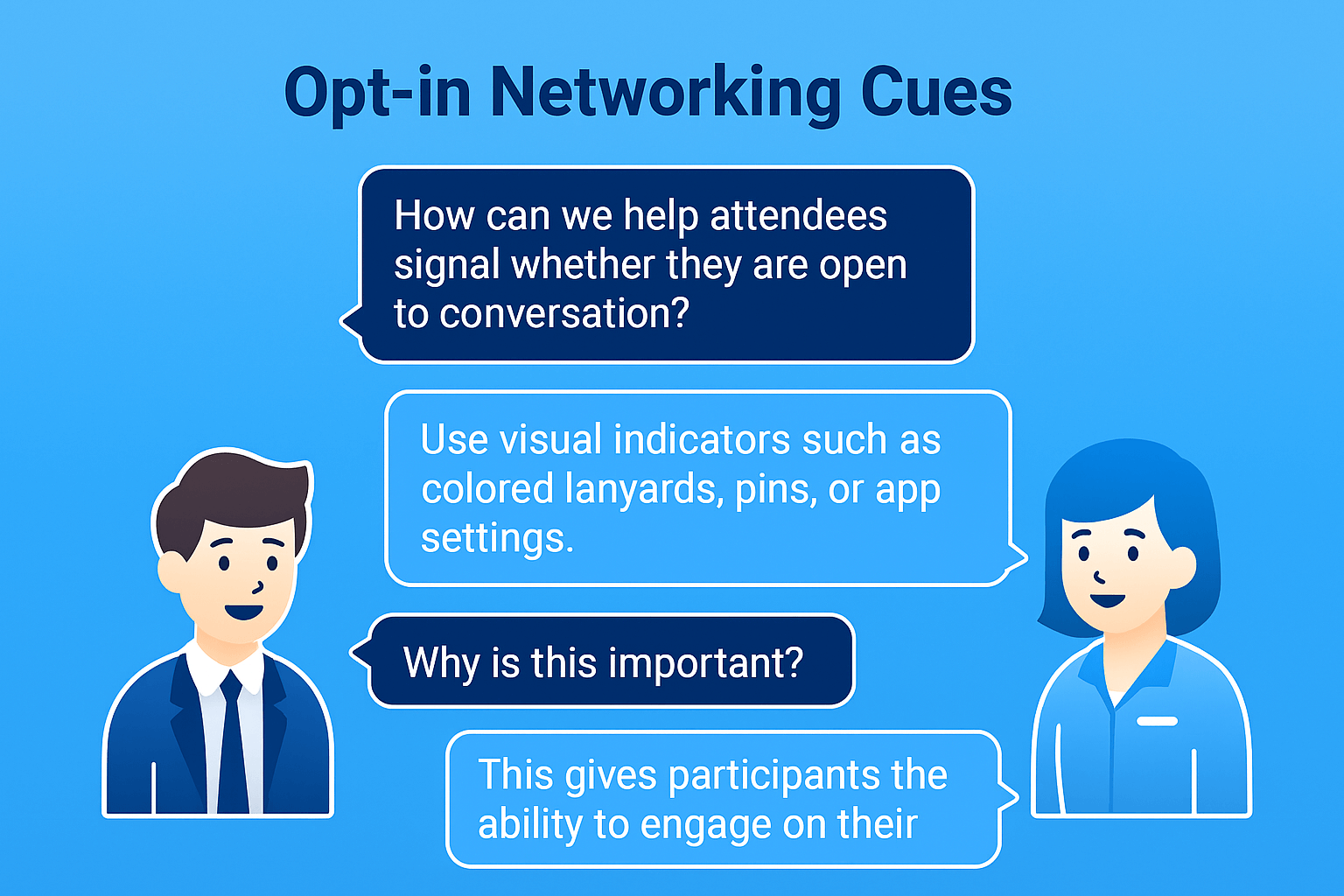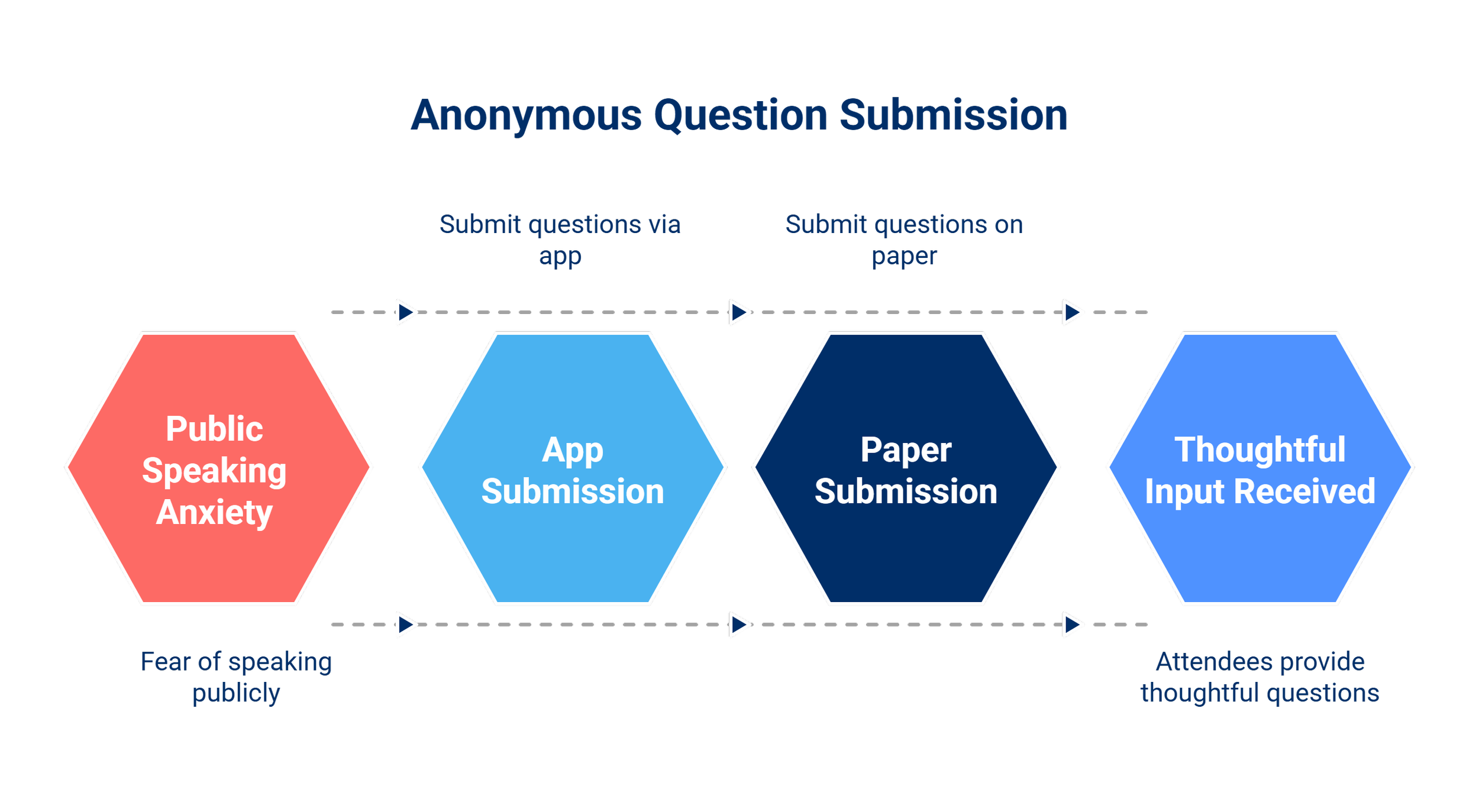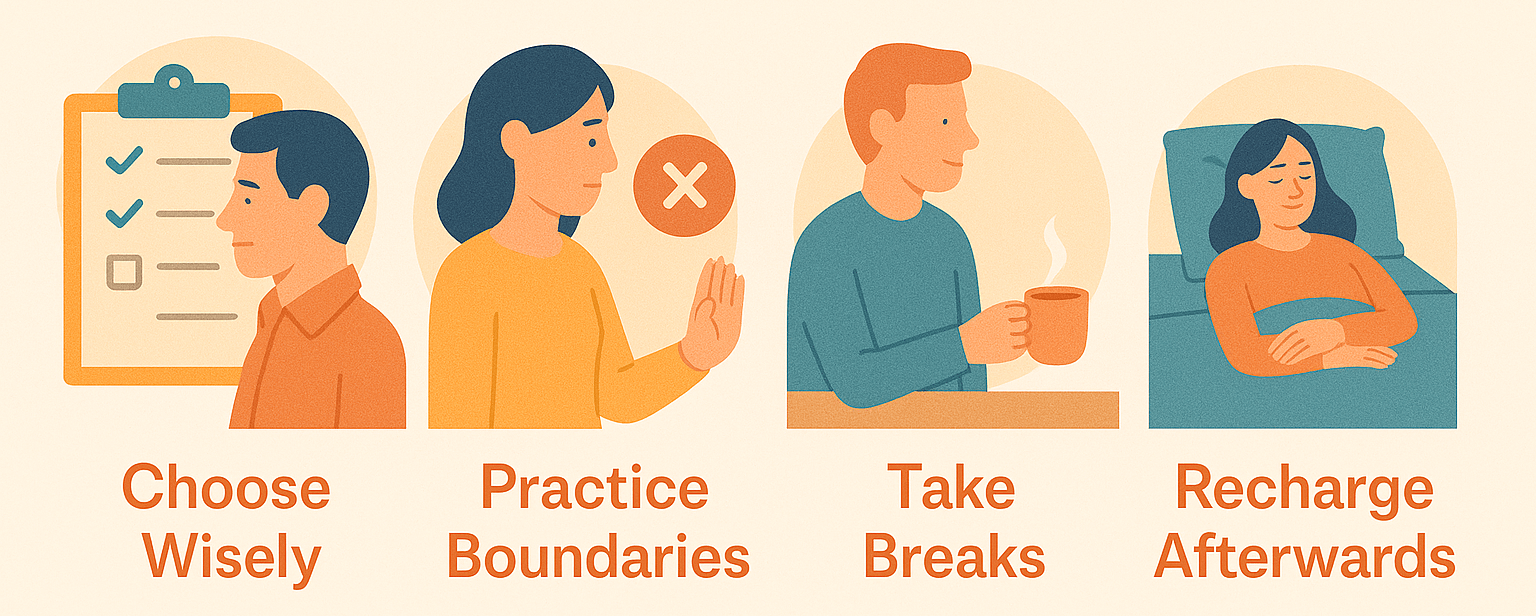Conferences for Introverts: Planning Events for the People Who Dread Them
Let’s be honest: most conferences are designed with extroverts in mind—loud networking mixers, packed schedules, high‑energy icebreakers, and constant social interaction tend to dominate. But what about the people who find those experiences draining?
If you have ever lingered at the coffee station to avoid small talk or fled to your hotel room while everyone else went to the after‑hours mixer, you are not alone: many attendees feel overwhelmed or overlooked in environments that emphasize nonstop connection and stimulation.
It may be time to rethink what a “successful” conference experience looks like and who it is truly serving.
Not Everyone Thrives in Highly Social Environments
Introversion is not about being shy or antisocial, but about how people manage energy. Introverts often prefer meaningful one‑on‑one conversations over large group activities, and tend to value reflection over constant interaction.
Experts suggest introverts may represent 30–50 percent of the population, meaning a considerable number of attendees could be quietly navigating discomfort, stepping away during the day, or disconnecting during key parts of your event. Often, this is not because of disinterest, but rather because the environment was not built with all attendees’ needs in mind.
How to Create an Introvert‑inclusive Conference
Designing with introverts in mind does not require removing social interaction; instead, it involves offering balance, flexibility, and thoughtful engagement. Here are some practical ideas to help make your next event more welcoming for quieter personalities. Extroverts might benefit from these, as well!
Recharge Zones
Set aside quiet, tech‑free spaces with comfortable seating and calming decor. These areas should not be used for networking, but for intentional moments of rest between sessions.
Opt‑in Networking Cues
Use visual indicators such as colored lanyards, pins, or app settings to help attendees signal whether they are open to conversation. This gives participants the ability to engage on their own terms.
Pre‑event One‑on‑One Matchmaking
Offer private introductions or curated connection opportunities before the event. This helps reduce social anxiety and makes stepping into the conference space feel more comfortable.
Written or Digital Q&A Options
Not everyone enjoys speaking into a microphone in front of a crowd. Provide a way for attendees to submit questions a different way, such as through an app or on paper. This creates space for thoughtful input without added pressure.
Solo‑first Sessions
Structure some workshops or sessions to begin with quiet reflection or journaling before starting the group discussion. This allows introverts time to gather their thoughts and practice what they will say before sharing with others.
Walking Breakouts
Offer optional guided walks as an alternative to traditional sit‑down networking. Walking side by side often leads to more relaxed and genuine conversations.
A Better Experience for All Attendees
These inclusive strategies are not just beneficial for introverts: they also support neurodivergent attendees, first‑time conference‑goers, individuals with social anxiety, and extroverts who may need moments of rest during a long day.
You do not need to change your entire event, just start by adding one or two of these features and watch how your audience responds. You may receive feedback from attendees who finally felt seen and supported.
Final Thoughts: Inclusion Should Extend to Personality Types
When planners think about inclusivity, they often only focus on accessibility, cultural diversity, or physical accommodation; however, personality traits are also an important part of the equation.
Designing a conference with introverts in mind is not simply about removing energy or excitement, but also about creating an experience that feels balanced, human, and welcoming to everyone in attendance.
So, the next time you plan a conference, ask yourself this question: would someone who finds networking exhausting still feel like they belong?
If the answer is no, there is an opportunity to plan differently.
Need help with meeting support?
PAI Consulting can help you take your meetings to the next level.
Contact us today for a consultation and let our meeting support experts help your meetings succeed.
Contact us for a consultationBack to Meeting Your Needs home.
Do you have questions or concerns about meetings? Share them with us!
PAI Consulting | Helping you succeed. Learn more.
Any opinions expressed in this article are those of the author and not the opinion of PAI Consulting. In addition, this article may contain links to third-party websites. PAI Consulting does not endorse or make any representations about them, or any information, software, or other products or materials found there, or any results that may be obtained from using them.
We welcome thoughtful and respectful discussion.
To keep this space safe and productive, please follow these guidelines:
Be respectful. Personal attacks, name-calling, and abusive language will not be tolerated.
Stay on topic. Keep comments relevant to the content of the post.
No spam or self-promotion. Links and promotions that are not relevant to the discussion will be removed.
Use appropriate language. This is a professional environment—please avoid profanity or offensive language.
Protect privacy. Don’t share personal information—yours or anyone else’s.
You may reply to, like, or flag other comments.
Comments are moderated and may be edited or removed at our discretion.
By commenting, you agree to abide by this policy.






